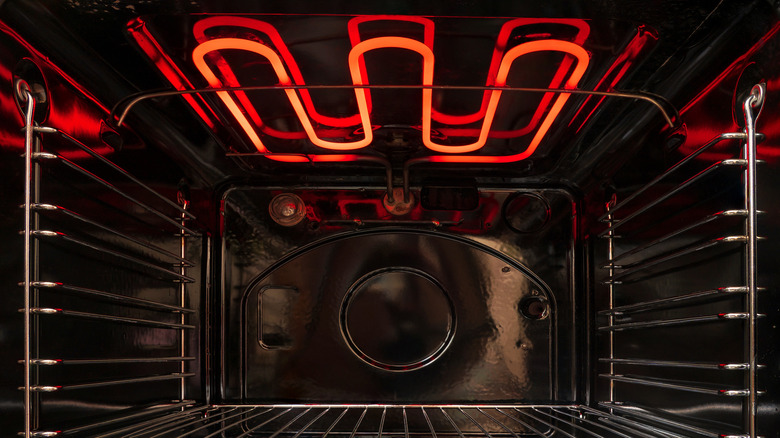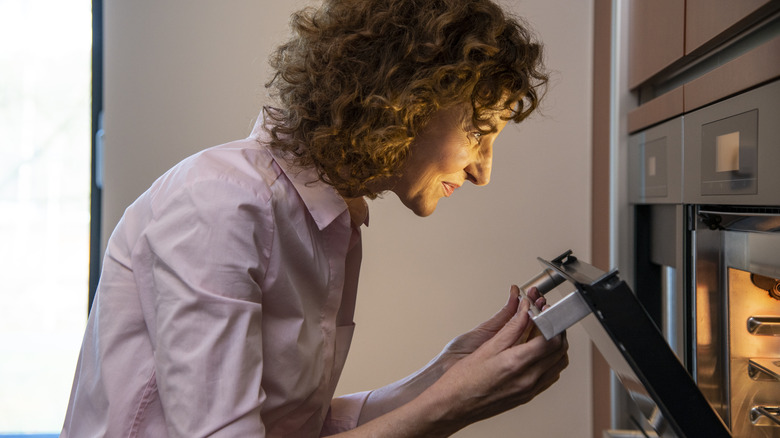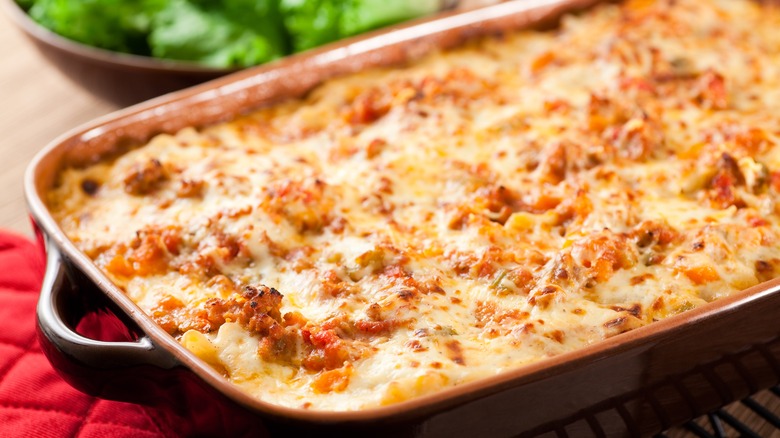Your Oven's Secret Feature For Better Broiling
If you have an oven, chances are you also have a broiler, even though you might not have noticed or used it. When in broiling mode, the heating element on the top side of the oven is turned on, letting you cook from the top down. You can use the broiler to cook a wide variety of dishes, from melting cheese on your tuna melt to cooking fish filets.
However, did you know there is another trick to improve broiling that is built into the oven design? As you might have noticed, when you open the oven door, you can stop it from opening fully, leaving a gap. You might have thought it is some kind of safety feature to prevent a closing door from pinching fingers, but it is designed for broiling. While it seems counterintuitive to leave the oven door partially open, it makes sense when it comes to broiling.
Broiling explained
While broiling and baking seem to be similar (aside from the direction of the heat), there is another major difference between the two — moisture. When baking or roasting in a closed oven, moisture is trapped inside, creating a hot, moist roasting environment. That is why bakers place cheesecakes in a water bath before baking. The water provides extra moisture that gets trapped in the oven, increasing the humidity that helps produce better cakes.
However, broiling is quite the opposite. The goal of broiling is to apply dry heat to the surface of the food, usually to promote browning or create a crust. As any experienced cook will tell you, moisture is the enemy of good browning, which is why most roast poultry recipes instruct you to dry the exterior of the bird as much as possible. Otherwise, the skin will not become browned and crispy. That is why keeping the oven door ajar makes sense when broiling. It lets moisture escape, creating a drier environment that allows the broiler to do its job quickly without overcooking.
Using your broiler
The two most common ways to use a broiler are cooking proteins and creating crusts. For example, dishes that call for melted cheese on top, such as this Lemon-Oregano Roasted Chicken with feta, take a brief trip to the broiler to melt and caramelize the cheese. On the high setting, it should not take more than a minute to create a delicious cheese crust. The broiler is also useful for creating a delicious top crust on your lasagna. Sprinkle extra mozzarella and parmesan cheese on top of the cooked lasagna, and place it under the broiler for several minutes until a brown crust forms. One of the most famous broiled cheese crusts is the melted gruyere that sits atop French onion soup.
You can even use a broiler to cook whole pieces of protein, such as chicken. Since the broiler is a dry cooking method, add extra moisture by marinating the chicken parts. Thinner protein is also ideal, so the entire piece will be cooked through before the top begins to overcook. For example, marinate boneless chicken thighs in a teriyaki sauce, then place them under a broiler. Broiling will cook the thighs quickly and caramelize the sugars of the teriyaki sauce, providing a savory and sweet crust that goes well with rice and steamed vegetables.



